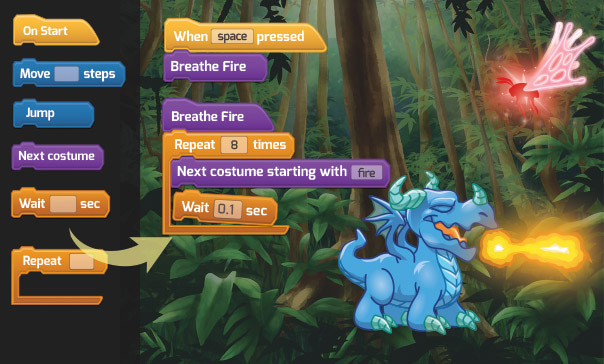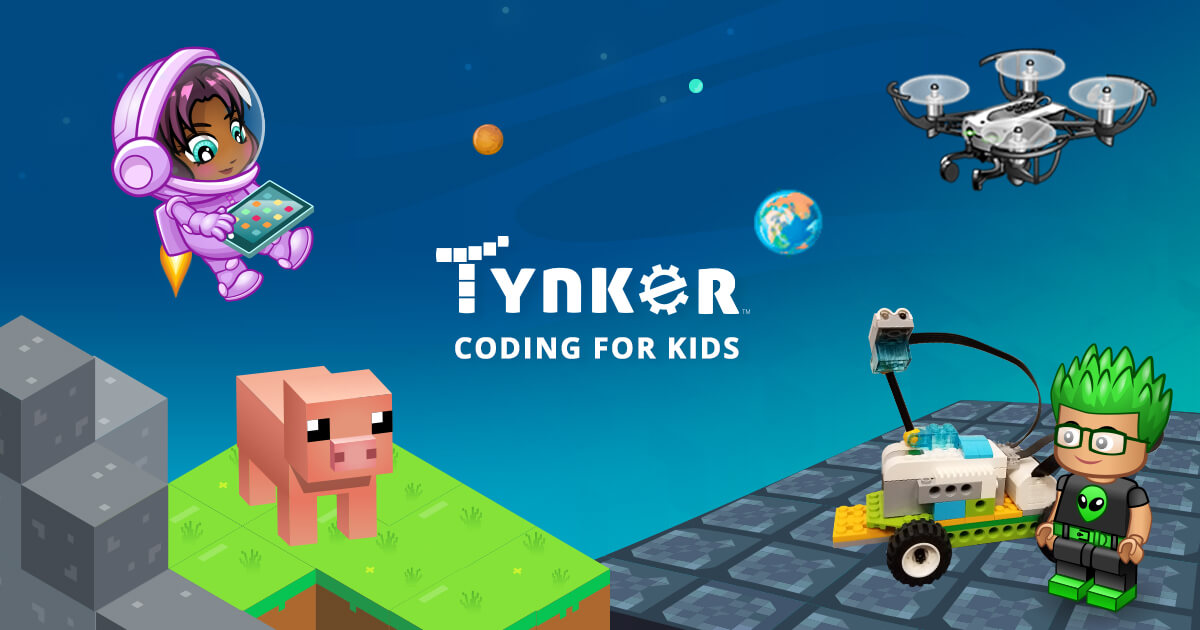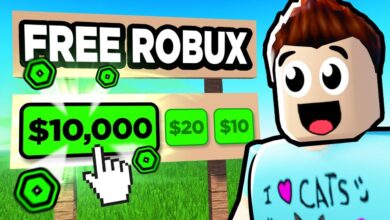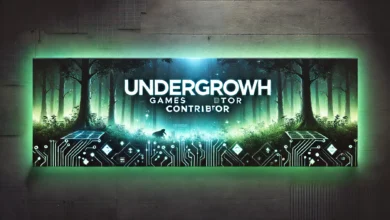Tynker The Fun and Powerful Way to Teach Kids How to Code

The Rise of Coding for Kids
In today’s fast-paced digital world Tynker, coding has become just as important as reading and writing. Parents and educators everywhere are realizing that computer programming isn’t just a technical skill—it’s a new form of creativity and problem-solving. And when it comes to teaching coding to kids in a fun and engaging way, one name stands out: Tynker.
Tynker is a leading platform designed to make coding easy, accessible, and exciting for children. Instead of overwhelming kids with complicated code, uses a game-based learning system that encourages creativity and exploration. It gives kids the confidence to build games, animations, and even real-world apps—while secretly mastering programming logic along the way.
The rise of platforms like Tynker shows a shift in how we approach education. Learning no longer has to be confined to textbooks and classrooms. Instead, it can be interactive, visual, and incredibly fun. Let’s dive deeper into what Tynker is, how it works, and why it’s transforming the way kids learn to code.
What is Tynker? Understanding the Platform

Tynker is an educational platform created to teach children coding through play. It simplifies complex coding concepts by using a block-based interface where kids can drag and drop commands to create programs. This approach eliminates the frustration of syntax errors and allows beginners to focus on logic and creativity first.
Founded in 2012, Tynker has grown into one of the most trusted coding platforms worldwide. It’s used by millions of students and thousands of schools to help kids learn everything from simple coding sequences to advanced programming languages like Python and JavaScript. The platform is designed for kids aged 5 and up, meaning it’s accessible to young learners as well as older students looking to sharpen their coding skills.
But what makes truly special is its flexibility. Whether a child wants to build a game, animate a story, or program a drone, Tynker has a path for them. The lessons are interactive, story-driven, and packed with challenges that make learning feel like an adventure rather than a chore.
Why Tynker Works So Well for Kids
Tynker’s success isn’t just luck—it’s based on solid educational psychology. The platform taps into how children naturally learn: through curiosity, creativity, and play. Instead of forcing students to memorize coding syntax, it allows them to experiment freely and learn from trial and error.
The block-based interface removes the barrier of “coding fear.” Many beginners are intimidated by programming languages, full of strange symbols and strict rules. eliminates that stress. Kids simply connect visual blocks to make things happen on screen. This approach builds their logical thinking and problem-solving abilities without the pressure of technical errors.
Moreover, Tynker introduces gamification, which means learning through fun challenges, rewards, and levels. Each time a child completes a mission, they gain points or unlock new tools. This constant sense of achievement keeps motivation high and encourages them to keep exploring. By the time they’re ready for real coding languages, they already understand programming logic deeply.
Features That Make Tynker Stand Out
Tynker isn’t just another coding app—it’s a complete learning ecosystem. It’s packed with features that make it both fun and powerful for learners at all levels.
1. Block and Text-Based Coding:
starts kids off with visual coding blocks, similar to LEGO pieces, where each block represents a specific command. As they gain confidence, they can transition to typing actual code in Python or JavaScript. This smooth transition bridges the gap between beginners and professional-level coding.
2. Creative Projects and Games:
Children can create their own games, animations, and stories using Tynker’s built-in assets and coding tools. They can even share their creations with a global community of young coders, which adds a social and competitive edge to the experience.
3. Learning Through Real-World Applications:
Tynker isn’t limited to screen-based learning. It allows kids to control drones, robots, and even micro:bit devices through code. This hands-on experience shows them that programming can make real things move, fly, and react—turning abstract concepts into tangible results.
4. Structured Learning Paths:
For parents and educators,offers structured courses that guide kids step-by-step. These courses are aligned with educational standards and are often used in classrooms worldwide. Whether it’s game design, web development, or artificial intelligence, Tynker provides a roadmap to mastery.
Tynker for Schools: Bringing Coding into the Classroom
Tynker isn’t just for home use—it’s also revolutionizing classroom education. Schools across the globe are integrating into their curriculum to prepare students for the future. The platform offers specialized teacher dashboards, lesson plans, and automatic grading systems that make managing coding classes effortless.
Teachers love Tynker because it requires no prior programming experience. The platform provides everything they need—from interactive lessons to performance tracking. It empowers educators to teach coding confidently, even if they’re not programmers themselves.
Students benefit even more. Coding lessons through encourage teamwork, logical thinking, and creativity. They learn how to break down problems, collaborate on projects, and think like engineers—all while having fun. With the growing demand for STEM education, has become an essential tool in modern classrooms.
Tynker at Home: Learning Beyond the Classroom
One of Tynker’s greatest strengths is its ability to make coding accessible at home. Parents can sign up their children for self-paced coding adventures that cover a wide range of interests. Whether your child wants to build a Minecraft mod, design a mobile game, or explore AI concepts, has a course for it.
Tynker’s home plans are flexible, with both monthly and annual subscriptions available. Parents can track their child’s progress, review achievements, and even code alongside them for a shared learning experience. The best part? Kids often don’t even realize they’re learning something so technical—they just feel like they’re playing an amazing game.
In a world where screen time is often criticized, turns it into something productive. Instead of just consuming digital content, kids are creating it. That shift in mindset—being a creator instead of just a user—is exactly what makes Tynker so valuable.
Tynker vs. Other Coding Platforms
While there are many coding platforms for kids, such as Scratch, Code.org, and Blockly, has carved out its own niche. It offers more structured learning paths, real-world integrations, and a smoother transition into professional programming languages.
Unlike Scratch, which is mostly a creative sandbox, combines freedom with guided lessons. This balance ensures that kids not only have fun but also progress through actual learning milestones. Plus, the integration with devices like drones and robots gives an edge in practical learning.
For parents comparing platforms, Tynker’s variety of courses, ease of use, and continuous updates make it one of the most well-rounded options available.
The Future of Tynker and Coding Education
The future of education is digital—and Tynker is already shaping that future. As technologies like AI, robotics, and data science become mainstream, the demand for coding skills will only grow. By starting young, Tynker users gain a lifelong advantage.
team continues to innovate, adding new content that keeps up with emerging trends. From coding for AR/VR experiences to exploring AI models, the platform is expanding beyond basic programming to help children prepare for tomorrow’s digital world.
Imagine a generation where kids don’t just use technology but understand and build it. That’s the world is helping to create.
Conclusion: Why Tynker is a Game-Changer for Young Learners
Tynker is more than just an app—it’s a movement towards smarter, creative, and tech-savvy learning. It turns coding into a joyful experience that sparks imagination and builds essential 21st-century skills. Whether used in schools or at home, empowers children to think critically, solve problems, and express themselves through technology.
In a world where coding literacy is becoming as important as traditional literacy, provides the perfect gateway. It’s easy to use, beautifully designed, and incredibly effective. For parents, teachers, and students alike, Tynker is not just teaching code—it’s unlocking the future.



